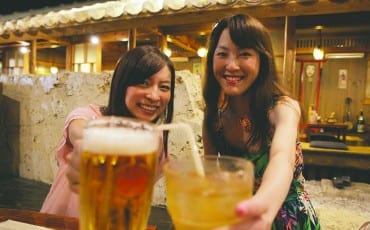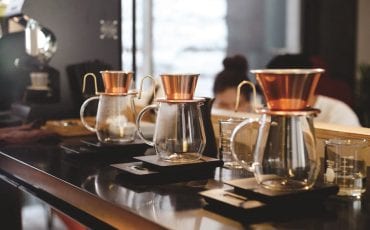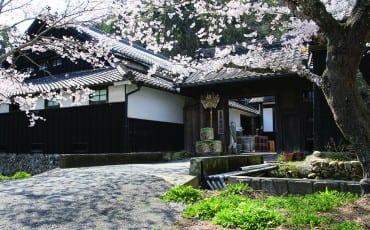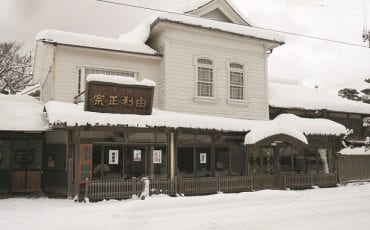- OISHII
- OISHII Wiki
- Sake
- Sake
OISHII Wiki
Sake
Sake
First things first: the word “sake” as used in English is somewhat of a misnomer. In Japanese, Sake generally refers to any alcoholic drink. When we use the word “Sake” in English, however, we’re actually referring to the particular variant that’s known as Nihonshu or Seishu (“Japanese liquor” and “clear liquor” respectively).
If that’s not complicated enough, Sake has also been loosely translated as “rice wine”, which, once again, is not quite accurate. Making wine involves the fermentation of sugars present in grapes or other fruit. The process of brewing Sake, however, is closer to that of beer, which requires sugar to first be converted from starch, before it’s able to produce alcohol.
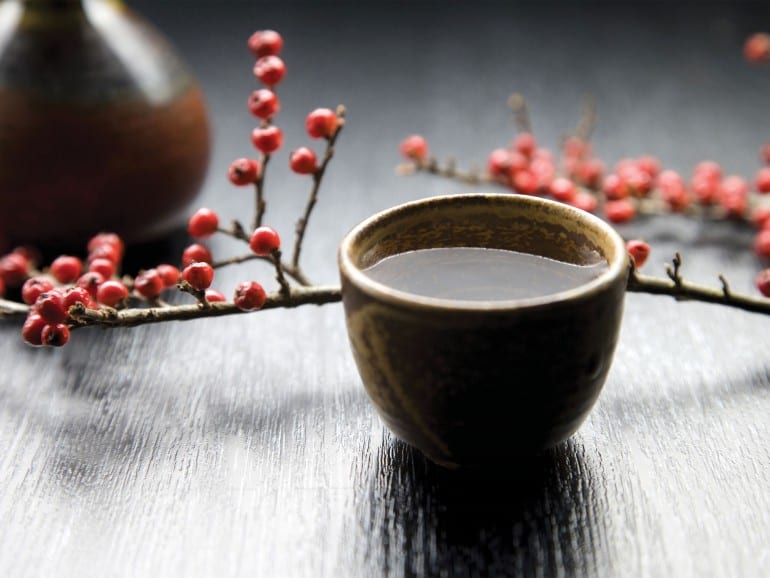
Neither Beer Nor Wine
But that’s where the similarity to beer ends. In brewing beer, converting the sugar from starch, and then from sugar to alcohol takes place in two distinct steps. In Sake, however, these two steps happen simultaneously, and this process of fermentation is wholly unique to Sake. Rice is first ground, washed, and steamed. Some of this steamed rice is used to make a yeast known as Koji. This is then put back with the remaining steamed rice and water to ferment. Following this, the mixture will then be filtered, pasteurised and put into cold storage to allow for maturation before it’s bottled.
Though we’ve only briefly mentioned each of the steps here, each of the steps is an extremely laborious process in itself. That’s why, besides good quality rice and water, as well as the ideal land and climate, a knowledgeable Toji or head brewer is needed to brew really great Sake.
What Affects The Quality of Sake?
It’s important to note that when talking about the flavour profiles of the various Sake-producing regions in Japan, broad generalisations are usually made, and there are many exceptions to the rule. It’s best to keep an open mind if you do get the opportunity to go on a Sake tour of Japan.
Sake generally falls into two categories – “regular” Sake (普通酒 or Futsushu) and “special designation” Sake (特定名称酒 or Tokutei Meishosu). Futsushu makes up about 75 percent of the total volume produced, with Tokutei Meishoshu making up the remaining 25 percent. Premium Sake is usually categorised according to several “special designations”, which depend on variations in the production processes.
Rice is, of course, at the heart and soul of the Sake-making process. Before it can be converted to starch, the rice grain needs to be milled. This outer part of the rice grains often contain impurities, which needs to be milled or “polished” away, as the impurities can negatively affect the taste of the drink. The more the rice needs to be milled, the more premium the product, as more grain needs to be used and more labour-intensive processes are involved in the production of this Sake. The highest grade of Sake from the Junmai family, Junmai Daiginjo (純米大吟醸) is brewed from rice polished until 50 percent or less of the original grain size.
The other factor that determines whether a Sake is of premium quality is whether distilled alcohol has been added to it. High quality Sake should have only a small quality of distilled alcohol – also known as “brewer’s alcohol” – added to it. Honjozo (本醸造) has just 10 percent of alcohol added and brewed from rice polished until 70 percent or less of the original grain size.
The ideal water for brewing sake should be rich in these minerals: potassium, magnesium and phosphoric acid. These will help develop the Koji as well as encourage the propagation of yeast. The water, however, should not have iron and manganese as these can affect the taste of the final product.
Ginjoshu is one category of a premium Sake. These have been milled to at least 60 percent; this means 60 percent or less of the rice grain remains after it has been milled, with a small percentage of brewer’s alcohol added to it.
Major Sake-producing Regions
Most prefectures in Japan will have their own sake breweries, and the locals are immensely proud of sake labels produced in their region. Consulting a local about what to drink, and drinking with one might just end up being one of the most important parts of your Sake education! However, if you’re keen on just exploring Japan’s major Sake-producing regions, here are the three you should visit.
Nada, a district in Kobe city, produces up to one-third of Japan’s Sake, and where most of Japan’s biggest brewers are located. Good quality rice and water are readily available here, as are cold winds blowing down from Mount Rokko, which help slow the fermentation process. The sake brewed here tends to be dry, sturdy and masculine.
Sake produced in Fushimi, Kyoto, provides the perfect contrast to Nada’s Sake. The spring water here is “softer” than the water used in brewing Sake in Nada, producing an alcohol that is slightly sweet, fragrant, feminine and more elegant than its Nada counterparts.
The third-largest sake-producing region is probably the mountainous, snowy Niigata. Not only does it have a “pure environment” for which to grow rice, the pure melted snow water used in the brewing process is also important in producing sake that is clean, dry and pristine. In fact, Niigata is well-known for producing some of the world’s finest sakes.
How To Enjoy Sake
Every Sake will usually have a suggested temperature for which to drink it, so it’s best to consult a Sake sommelier. Some Sakes lend themselves to being drunk either warm or chilled, depending on your preference, the season, as well as what food you’re having it with.
Sake is usually served in a decanter known as Tokkuri. If you choose to have your Sake warm, it’s important not to overheat it. It should be placed in a decanter with warm – and not boiling – water. The ideal temperature for enjoying warm Sake is known as Hitohada, or the temperature of a person’s skin, which is supposed to help bring out the full flavours of the sake.
Paired with food, Sake is supposed to serve one or more of the following functions: enhancing the taste of both the food and Sake, creating a new taste, bringing out food’s hidden flavours and cleansing the palate.
When trying a sake, Japanese tasters take these five flavours into account: Karami (dryness), Nigami (bitterness), Shibumi (astringency or tartness), Amami (sweetness) and Sanmi (acidity.) Of course, practice and experience will be needed to better acquaint yourself with the many complexities of this renowned drink.
Water must be served with the Sake and its purpose is twofold; first, to rinse the mouth so the flavours of the food and sake can come through clearly with each bite. Water will also help slow the rate of intoxication.






